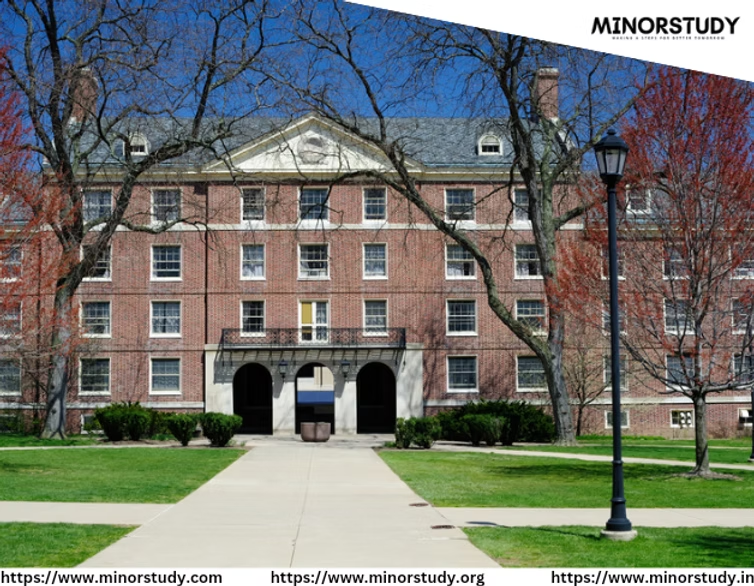🩺 Introduction: Where Tradition Meets Tomorrow
The Perelman School of Medicine at the University of Pennsylvania (PSOM), commonly known as Penn Med, stands as one of the oldest and most esteemed medical schools in the United States. Established in 1765, it has led the charge in transforming healthcare education, biomedical research, and patient-centered clinical care for over 250+ years.
- 📜 Historical Overview: A Legacy Rooted in American Medicine
- 📊 Top 10 Powerful Facts About Perelman School of Medicine
- 🗓️ Timeline: From Revolution to Evolution
- 🎯 Core Significance of Penn Med
- 🧠 1. Groundbreaking Research
- 📚 2. World-Class Education
- ❤️ 3. Clinical Excellence
- 🌎 4. Global and Societal Impact
- 💡 Why It Matters in Everyday Life
- 💬 Frequently Asked Questions (FAQs)
- ❓1. How hard is it to get into Perelman School of Medicine?
- ❓2. What makes Penn Med different from other top medical schools?
- ❓3. Does Penn Med offer financial aid?
- ❓4. What degrees does Penn Med offer?
- ❓5. Is it involved in public health?
- 🎉 Traditions and Observances at Penn Med
- 🌟 Key Takeaways
- 💖 Wishing All Aspiring Healers
- 🧠 Conclusion: A Place Where Medicine Meets Mission
Whether you’re an aspiring doctor, a patient, or a curious mind, Penn Med’s story is your story too—because the research, policies, and medical advancements pioneered here echo across hospitals, communities, and even households.
📜 Historical Overview: A Legacy Rooted in American Medicine
Founded in 1765, the Perelman School of Medicine holds the distinction of being America’s first medical school. Created by Dr. John Morgan, its mission was bold and clear: to develop an American-trained class of physicians equal to or better than their European counterparts.
Key Milestones:
1765: First medical lectures delivered—birth of Penn Med.
1800s: Set the tone for U.S. medical education; home to notable names like Benjamin Rush.
1874: University Hospital established—the teaching hospital for Penn Med.
1965: Celebrated its bicentennial with global recognition.
2011: Renamed “Perelman School of Medicine” after a $225 million gift from Raymond and Ruth Perelman—the largest single gift ever to a medical school.
Today: A global leader in gene therapy, cancer research, neuroscience, and bioethics.
📊 Top 10 Powerful Facts About Perelman School of Medicine
Founded in 1765, it is the oldest medical school in the United States.
Consistently ranked among the top 3 medical schools for research by U.S. News & World Report.
Home to over 2,800 full-time faculty and 600+ medical students.
Affiliated with six hospitals, including the prestigious Hospital of the University of Pennsylvania (HUP).
Spearheaded mRNA vaccine research, laying groundwork for COVID-19 vaccine success.
Boasts 28 Nobel laureates connected to faculty and alumni.
Pioneered CAR-T cell therapy, a revolutionary cancer treatment.
Features the Leonard Davis Institute of Health Economics—driving policy that influences national healthcare.
Strong emphasis on health equity, public health, and social justice.
Offers combined degrees (MD/PhD, MD/MBA, MD/MPH), preparing leaders for every healthcare frontier.
🗓️ Timeline: From Revolution to Evolution
| Year | Milestone |
|---|---|
| 1765 | Founded by Dr. John Morgan |
| 1800s | Birthplace of modern U.S. medical training |
| 1874 | University Hospital opened |
| 1965 | Celebrated 200 years |
| 2011 | Renamed Perelman School after $225M donation |
| 2020 | Played pivotal role in COVID-19 vaccine development |
| 2024 | Launched new research centers in AI & personalized medicine |
🎯 Core Significance of Penn Med
🧠 1. Groundbreaking Research
Penn Med has been the epicenter of medical revolutions, from gene therapy to CRISPR innovations. It continues to push the envelope in oncology, immunology, neuroscience, and regenerative medicine.
📚 2. World-Class Education
Its flexible curriculum, strong mentorship programs, and dual-degree options make it a dream institution for future doctors and researchers.
❤️ 3. Clinical Excellence
Affiliated hospitals offer cutting-edge care and treat millions of patients annually, serving as learning grounds and sanctuaries of healing.
🌎 4. Global and Societal Impact
Penn Med is involved in global health missions, develops health policies, and addresses disparities in care for marginalized communities.
💡 Why It Matters in Everyday Life
Even if you never step foot on its campus, Perelman’s influence touches you:
The vaccine you received may have been developed by Penn researchers.
The surgeon who saved your loved one’s life may have trained here.
The healthcare policies in your city may be based on research conducted at Penn.
Your local hospital may use technology or practices first pioneered by Penn Med.
In short, it’s a life-changing institution, not just for its students, but for millions of people around the globe.
💬 Frequently Asked Questions (FAQs)
❓1. How hard is it to get into Perelman School of Medicine?
Extremely competitive. The acceptance rate is typically around 3-4%, with applicants needing stellar academic records, research, and clinical experience.
❓2. What makes Penn Med different from other top medical schools?
It balances cutting-edge research, clinical training, social responsibility, and accessibility to underserved populations, all within a collaborative Ivy League ecosystem.
❓3. Does Penn Med offer financial aid?
Yes. The school provides need-based scholarships, grants, and loan assistance, aiming to ensure accessibility regardless of financial background.
❓4. What degrees does Penn Med offer?
MD
MD/PhD
MD/MBA
MD/MPH
Certificate programs in global health, informatics, and more.
❓5. Is it involved in public health?
Absolutely. It runs public health initiatives, community outreach, and health disparity research through centers like the Center for Community Health Workers.
🎉 Traditions and Observances at Penn Med
White Coat Ceremony – Symbolizing the start of medical training.
Match Day – Where students find out their residency placements.
Graduation Convocation – A celebration of years of training, compassion, and perseverance.
Perelman Day – Honoring donors and the transformational legacy of Raymond and Ruth Perelman.
These are not just events—they are milestones in lives dedicated to service.
🌟 Key Takeaways
Founded in 1765, the oldest U.S. medical school.
A hub for biomedical breakthroughs, from gene therapy to COVID-19 vaccines.
Renowned for its dual-degree programs, inclusive curriculum, and strong societal focus.
Plays a pivotal role in shaping health policy, treatment protocols, and medical ethics.
Its doctors, students, and research touch millions of lives every day.
💖 Wishing All Aspiring Healers
“To the ones who dream of saving lives—may your journey begin with passion and end with purpose. Let Penn Med be your guide, your mentor, and your inspiration.”
Whether you aim to cure, teach, research, or lead—Perelman welcomes the fearless and the kind-hearted.
🧠 Conclusion: A Place Where Medicine Meets Mission
The Perelman School of Medicine at the University of Pennsylvania is more than an academic institution. It is a pillar of hope, a force of innovation, and a sanctuary for both the sick and the scholarly. Its contributions go far beyond university walls—they’re found in hospital ICUs, public policies, classrooms, and global health missions.
From healing the human body to improving the healthcare system at large, Penn Med continues to shape a healthier, more equitable world. Its impact is silent yet seismic, felt by every heartbeat saved and every life made better.
🔚 Final Thought:
In a world full of uncertainty, the Perelman School of Medicine remains a symbol of promise, purpose, and profound possibility.








